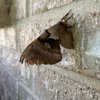Concerned about cats
18 years ago
Related Stories

FUN HOUZZGuessing Game: What Might Our Living Rooms Say About Us?
Take a shot on your own or go straight to just-for-fun speculations about whose homes these could be
Full Story
HEALTHY HOMEWhat You Need to Know About Dust and How to Fight It
Breathe easier with these 10 tips for busting mites, dander and other microscopic undesirables
Full Story
FURNITUREHow to Buy a Quality Sofa That Will Last
Learn about foam versus feathers, seat depth, springs, fabric and more for a couch that will work for years to come
Full Story
PETSWhat Chihuahuas Can Teach Us About Interior Design
Who knew these tiny dogs could be such a huge fount of design tips? Houzzers did
Full Story
GARDENING GUIDESNew Ways to Think About All That Mulch in the Garden
Before you go making a mountain out of a mulch hill, learn the facts about what your plants and soil really want
Full Story
PETSSo You're Thinking About Getting a Dog
Prepare yourself for the realities of training, cost and the impact that lovable pooch might have on your house
Full Story
LIFEHouzz Call: What Has Mom Taught You About Making a Home?
Whether your mother taught you to cook and clean or how to order takeout and let messes be, we'd like to hear about it
Full Story
GARDENING FOR BIRDSWhat to Know About Birds Nesting in Your Yard
Learn how to observe, record data and help ornithologists with NestWatch’s citizen science project understand bird trends
Full Story
LIFEThe Beautiful Thing About Dad's Chair
My father had his own spot in the house. His father had his own spot. Now I have mine
Full Story
LIGHTINGWhat to Know About Switching to LED Lightbulbs
If you’ve been thinking about changing over to LEDs but aren't sure how to do it and which to buy, this story is for you
Full Story



lisa11310
ralleiaOriginal Author
Related Discussions
My cat is digging in my beds (Please help asap!)
Q
small black spot on monarch cat, . . . should I be concerned?
Q
Cat loosing weight..
Q
Homemade repellent to keep cats out of yard...
Q
penny1947
ralleiaOriginal Author
christy2828
ralleiaOriginal Author
penny1947
kristin_williams
christy2828
penny1947
ralleiaOriginal Author
toyon
kristin_williams
christy2828
toyon
christy2828
kristin_williams
toyon
christy2828
flower_lover5
christy2828
catnappurr
homernoy
lizzyvann
navymom2226
homernoy
tomatozilla
christy2828
riflechi
riflechi